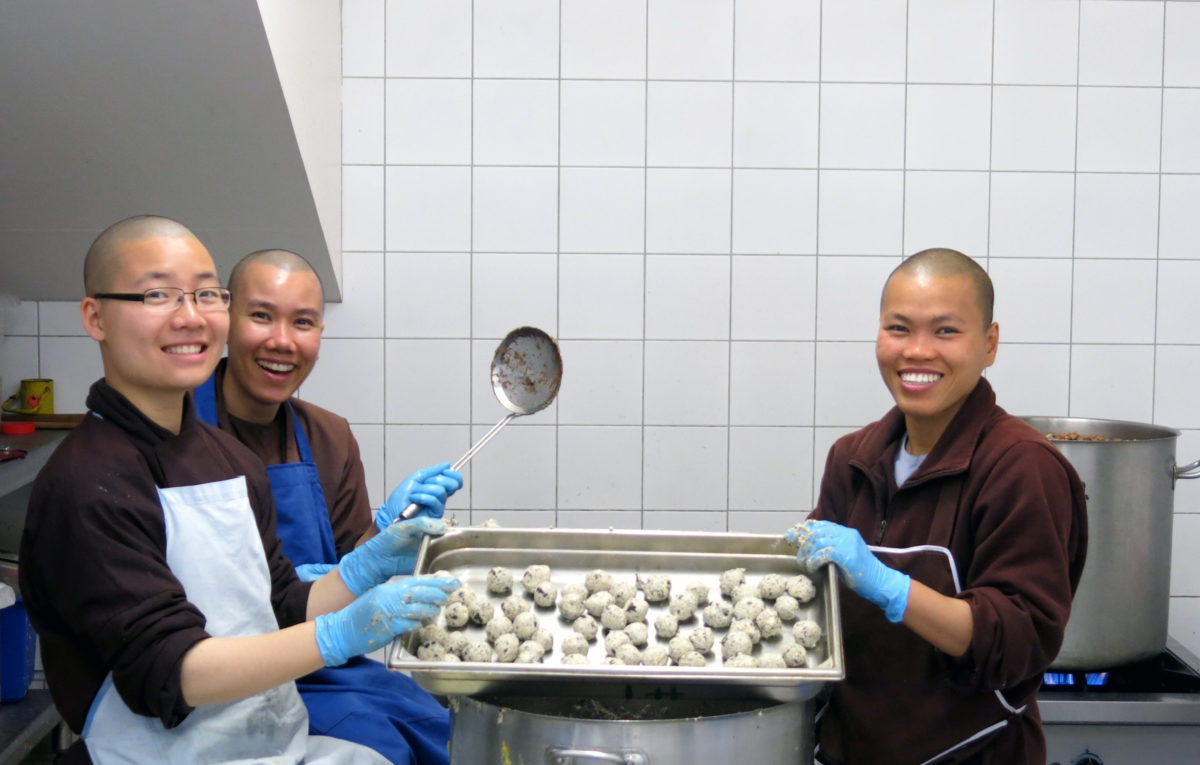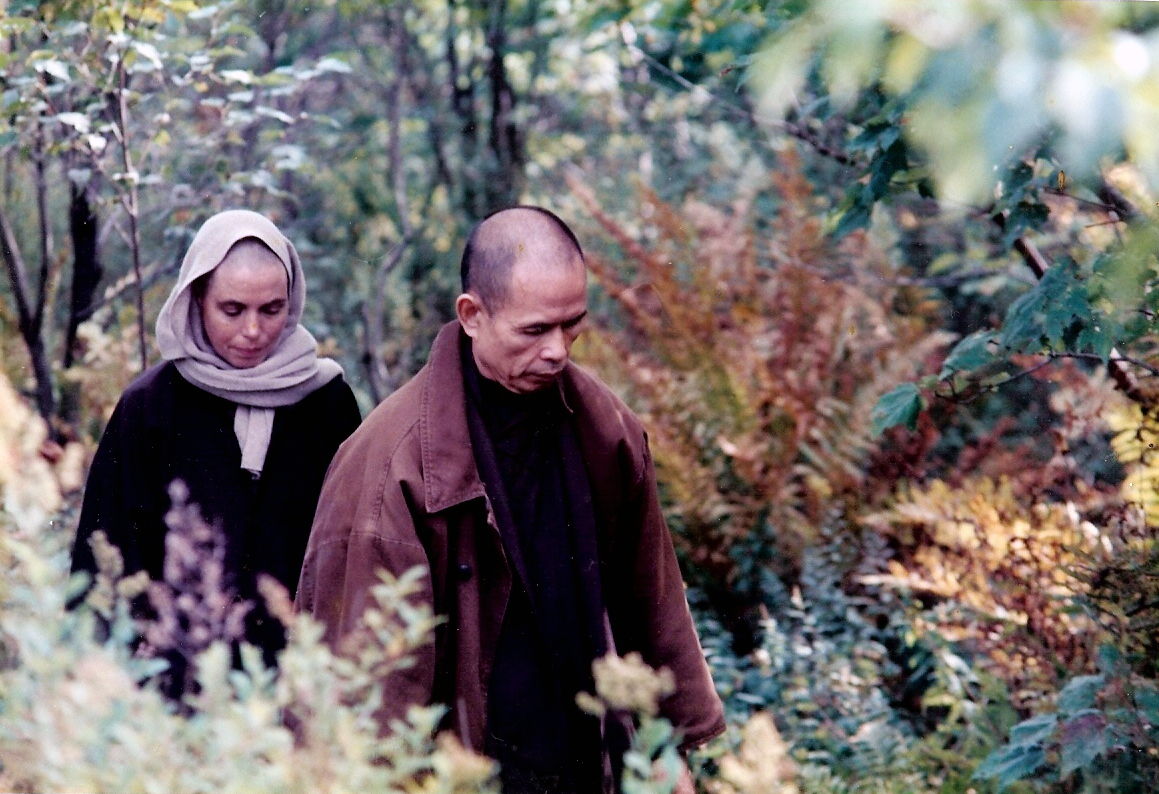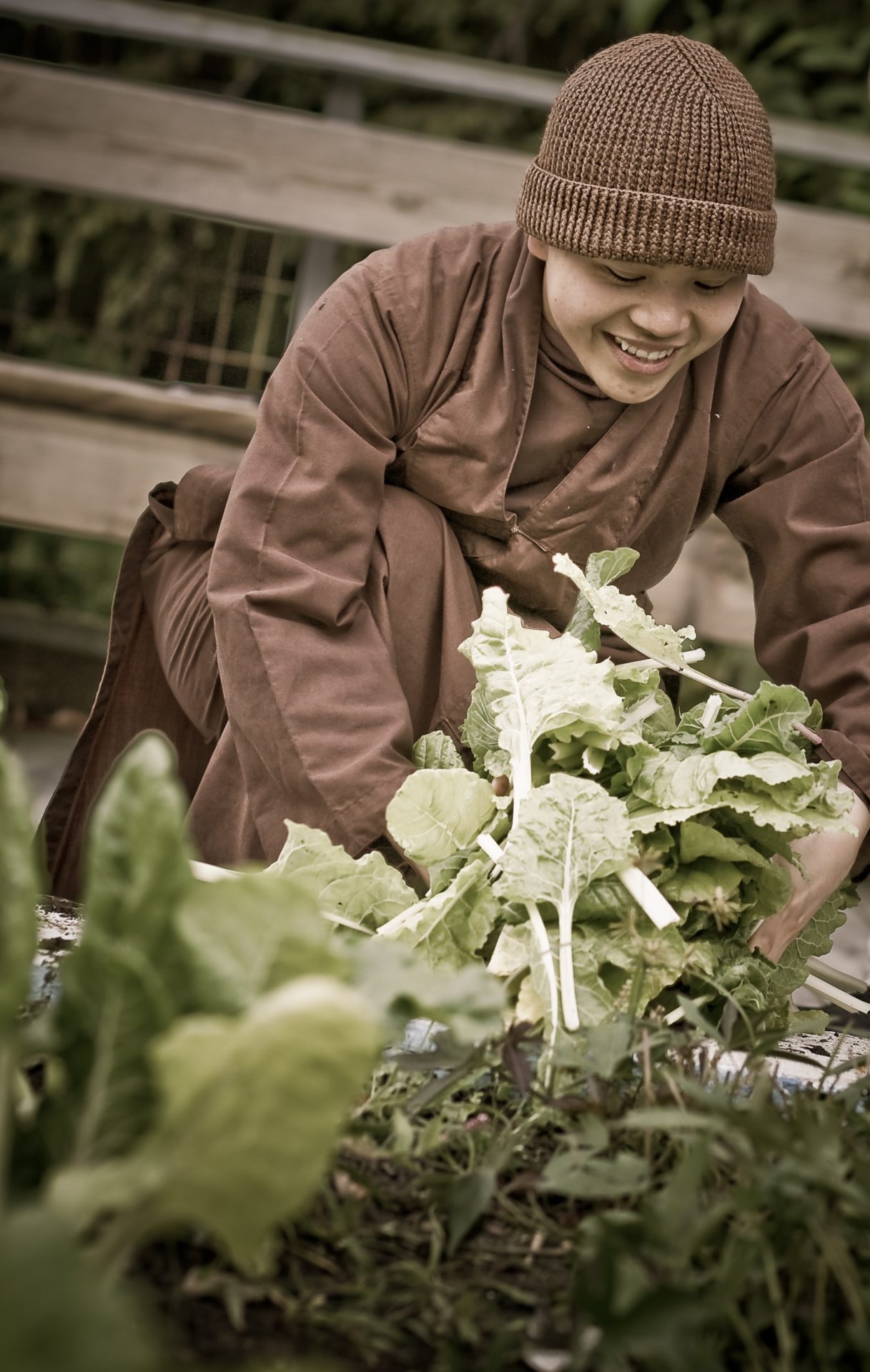By Sister Chan Dieu Nghiem (Sister Jina)

I would like to share an experience I had in a Winter Retreat that has inspired me ever since.
This was in the early times of Plum Village, maybe in Winter 1991. Thich Nhat Hanh (Thay) used to teach in the dining hall in the Lower Hamlet.
By Sister Chan Dieu Nghiem (Sister Jina)

I would like to share an experience I had in a Winter Retreat that has inspired me ever since.
This was in the early times of Plum Village, maybe in Winter 1991. Thich Nhat Hanh (Thay) used to teach in the dining hall in the Lower Hamlet. The old dining hall. Some of you know what it looked like. There was a big woodstove, and Thay used to sit near the woodstove behind a table, and we would all sit on chairs in rows in front of Thay.
At that time, we had to cook in a corner of the dining hall where the sink used to be. There was a counter to cut the vegetables, with the sink and a stove behind it. There was not much space in the dining hall, and we would be cooking while Thay was giving the Dharma talk.
Back then, we had smaller cooking teams. Our cooking team was a team of two: me and myself. [Laughter] Our team had to cook for forty-five people, which was quite challenging for a team that had never cooked for more than six people. That day was my first time to cook on a Day of Mindfulness.
Thay was teaching in the front of the dining hall and I was in the corner, washing and cutting vegetables and then cooking them on the stove. I had to be very quiet and be very present with what I was doing so as not to disturb Thay. I was cutting the vegetables, breathing, cutting, washing . . . Then I had to wash the pot. I had to go from the cooking corner to the next room, where the sink for washing pots was. This meant I had to walk past Thay!

I picked up the pot and walked really mindfully, aware of every step and breath. I went to the other kitchen and washed the pot. There was no door that could be closed, and from the dining hall you could hear everything that was happening in the other kitchen. When I had finished washing the pot, I walked back and continued to cook.
The atmosphere felt very light and I was very present with what I was doing. After the Dharma talk, Thay came straight to the counter where I was cooking and said, “Sister Jina is a good cook.” I looked at Thay in surprise. Thay had never tasted anything I cooked. How could Thay know whether I was a good cook or not? Thay gave me a big smile and at that moment I understood. I got it! Thay was referring not to the taste of my dishes but to how I had been cooking and moving around.
Although that was not the only day I cooked, it is the only one I remember. Cooking in the presence of Thay felt like I wasn’t cooking alone. I benefitted from Thay’s presence, Thay’s energy. It was a very beautiful experience.
When I find myself distracted, making noise while moving around, I remember that cooking day. It is like a bell of mindfulness. It helps me bring my mind home to my body and become more aware of my movements.
Everyone benefits from Thay’s presence. In 1996 or 1997, when all the sisters were living together in the New Hamlet, Thay would come and eat with us from time to time. One day when I walked into the dining hall, I was struck by the energy in the place. Some sisters were coming into the hall from other parts of the building. They opened and closed the doors so mindfully. Everybody was eating and moving around mindfully, especially mindfully. It stopped me in my tracks. I looked around and I spotted Thay sitting in a corner having lunch. It brought a smile to my face.
That afternoon, after I had shared this with Thay, Thay asked me, “Why do you think this is?” I did not answer Thay but have taken time to reflect on it. Thay’s presence increases the quality of my mindfulness. So if Thay’s physical presence helps me to be more present in all I do, then why don’t I call on Thay when walking to the meditation hall in the morning, when having lunch, or when sitting? In this way I can benefit from Thay’s presence wherever I am at any time.
Sister Chan Dieu Nghiem (Sister Jina) ordained in Japan in 1985 and came to Plum Village in 1990 to take part in the first 21-day retreat and has been living and practicing in Plum Village ever since. In 1992, during the Great Ordination Ceremony, she received the Bhiksuni Ordination on 10th January followed by the Lamp Transmission from Thay the next day. From 1998 to 2014 she served as Abbess of Dharma Nectar Temple (Lower Hamlet).
Reprinted from La Thu Lang Mai with permission from Sister Jina and the monastic community.

